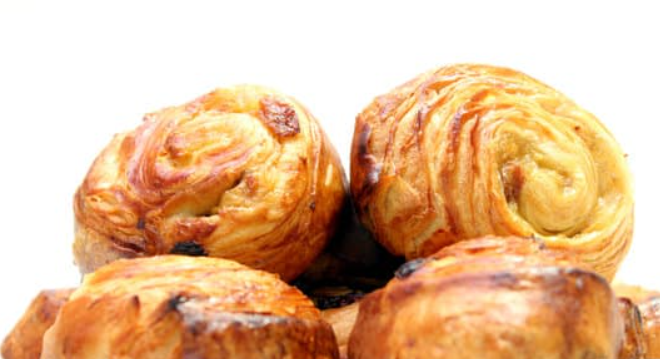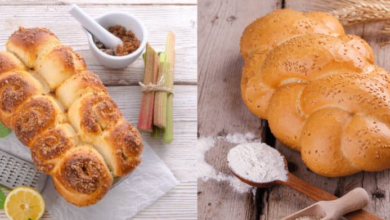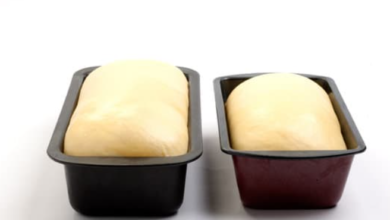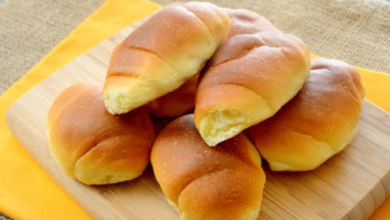Are Brioches Really Laminated Doughs?

What To Know
- Laminated dough, also known as puff pastry, is a type of dough that consists of alternating layers of dough and butter.
- Croissant dough is a laminated dough with a flaky, crispy texture, while brioche dough is enriched with butter and has a soft, pillowy texture.
- To create a fluffier brioche dough, ensure you knead it properly, allow it to rise twice, and bake it at the correct temperature.
Brioche, a delectable pastry renowned for its rich, buttery flavor and soft, fluffy texture, has captivated taste buds around the world. However, a common question lingers: is brioche a laminated dough? To answer this culinary enigma, let’s delve into the world of pastry doughs and explore the unique characteristics of brioche.
What is Laminated Dough?
Laminated dough, also known as puff pastry, is a type of dough that consists of alternating layers of dough and butter. The dough is rolled and folded several times, creating countless thin layers that trap air and steam during baking. This process results in a flaky, crispy, and airy texture.
Is Brioche a Laminated Dough?
The answer is a resounding no. Brioche is not a laminated dough. Unlike laminated dough, brioche dough does not undergo the rolling and folding process that creates the characteristic layers. Instead, brioche dough is enriched with butter, eggs, and milk, which contribute to its rich flavor and soft, pillowy texture.
What Makes Brioche Unique?
While not laminated, brioche possesses several unique qualities that set it apart from other doughs:
- High Butter Content: Brioche dough contains a generous amount of butter, typically around 25-35%. This butter content gives brioche its signature richness and flavor.
- Eggs: Eggs are another essential ingredient in brioche dough. They add moisture, structure, and a golden hue to the pastry.
- Milk: Milk helps to tenderize the dough and gives brioche its characteristic softness.
- Yeast: Brioche dough is leavened with yeast, which produces carbon dioxide gas during fermentation. This gas creates air pockets in the dough, resulting in its fluffy texture.
Differences Between Brioche and Laminated Dough
To further clarify the distinction between brioche and laminated dough, here are some key differences:
- Texture: Brioche has a soft, pillowy texture, while laminated dough is flaky and crispy.
- Flavor: Brioche is rich and buttery, while laminated dough is more neutral in flavor.
- Preparation: Brioche dough is enriched and kneaded, while laminated dough is rolled and folded.
- Uses: Brioche is typically used for sweet pastries, such as brioche buns and cinnamon rolls. Laminated dough is used for a variety of pastries, including croissants, danishes, and puff pastries.
Bread vs. Pastry
It’s important to note that brioche is technically a bread rather than a pastry. This is because it does not contain sugar, which is a defining characteristic of pastries. However, due to its rich flavor and luxurious texture, brioche is often categorized as a pastry.
Versatility of Brioche
Brioche dough’s versatility makes it a popular choice for a wide range of culinary creations:
- Brioche Buns: These classic buns are perfect for sandwiches, burgers, and breakfast treats.
- Cinnamon Rolls: Brioche dough transforms cinnamon rolls into decadent and indulgent pastries.
- French Toast: Brioche slices make a delectable base for French toast, creating a rich and satisfying breakfast.
- Savory Bread: Brioche dough can also be used to create savory breads, such as brioche loaves for sandwiches and stuffing.
Recommendations: Unlocking the Brilliance of Brioche
Brioche, a culinary masterpiece, stands out as a unique dough that is not laminated. Its rich flavor, soft texture, and versatility make it a beloved ingredient among pastry chefs and home bakers alike. Whether enjoyed as a sweet treat or a savory bread, brioche continues to tantalize taste buds with its undeniable charm.
Basics You Wanted To Know
Q: What is the difference between brioche and croissant dough?
A: Croissant dough is a laminated dough with a flaky, crispy texture, while brioche dough is enriched with butter and has a soft, pillowy texture.
Q: Can I use brioche dough to make croissants?
A: No, brioche dough cannot be used to make croissants because it lacks the layers of butter that are essential for the flaky texture of croissants.
Q: Why is my brioche dough dense?
A: Dense brioche dough can be caused by overworking the dough, using too much flour, or not allowing it to rise sufficiently.
Q: How can I make my brioche dough more fluffy?
A: To create a fluffier brioche dough, ensure you knead it properly, allow it to rise twice, and bake it at the correct temperature.
Q: What is the best way to store brioche?
A: Brioche should be stored in an airtight container at room temperature for up to 3 days. For longer storage, it can be frozen for up to 2 months.





